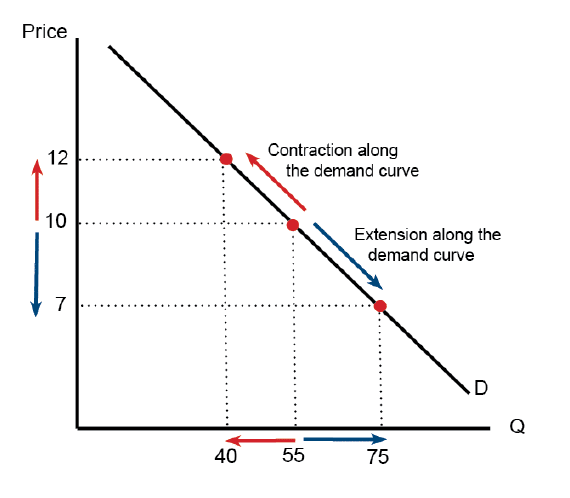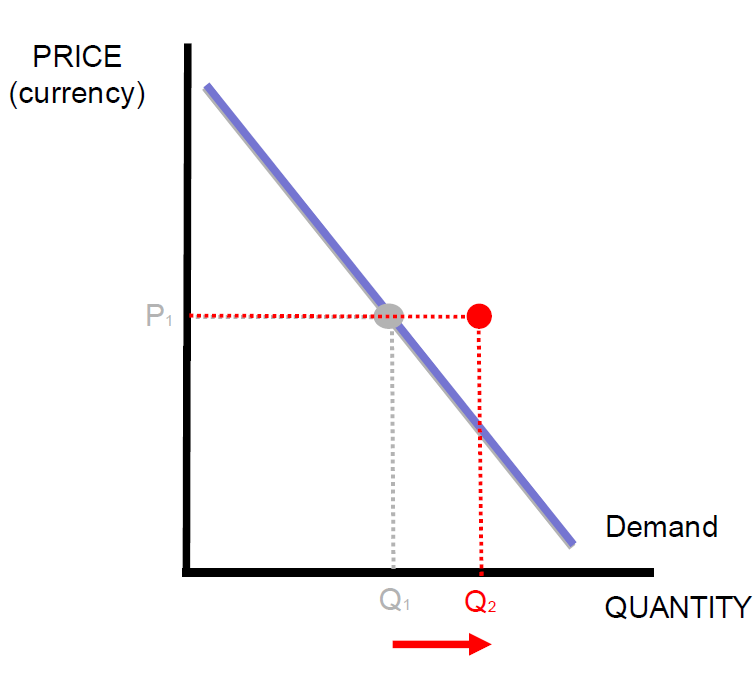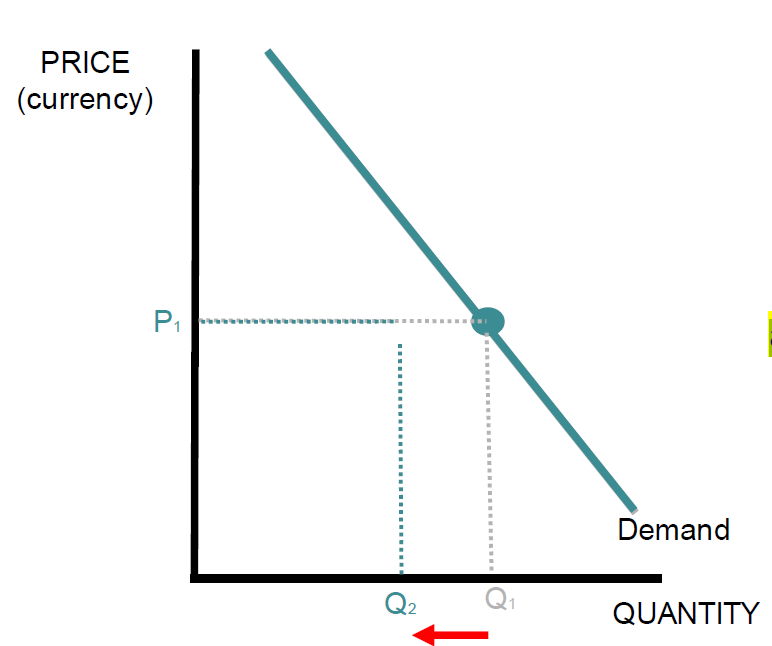Movements along the demand curve
Movements along the demand curve are caused ONLY BY CHANGES IN THE PRICE of a good.
Contraction of Demand
When the quantity demanded for a good falls because its price rises; it is shown by a movement up the demand curve.
Extension of Demand
When the quantity for a good increases because its price falls; it is shown by a movement down the demand curve.

Shifts of the demand curve
A demand curve shifts to the right when there is an increase in the amount demanded at every price

A demand curve shifts to the left when there is an increase in the amount demanded at every price

Factors causing shifts in the demand curve
1. Price of substitutes and complements.
Substitute goods are goods which are alternatives to each other that can be used for the same purpose
Say the price of The Sun newspaper increases by 3.00, what would happen to the demand of The Mirror newspaper?
CASE 1:
An increase in the price of one of the goods will decrease demand for it But increase the demand for the substitute .
CASE 2:
A decrease in the price of one of the goods will increase demand for it and decrease the demand for the substitute .
2. Consumer income
Normal good (e.g., chocolate)
A rise in income –> increase in demand at all price levels –> shift the demand curve right
A fall in income –> decreases demand at all price levels –> shifts the curve left
Inferior good (e.g., cheap clothing, instant noodles)
A rise in income –> decreases the demand at all price levels –> shift the demand curve left
people demand less at each price level since they’ll often switch to more expensive goods.
A fall in income –> increases demand at all price levels –> shifts the curve right
inferior goods become a more affordable substitute for a more expensive good.
Luxury goods (e.g., sports car)
A luxury item is not necessary to live, but it is deemed highly desirable within a culture or society.
Luxury items tend to be sensitive to a person’s income or wealth, meaning that as wealth rises, so do purchases of luxury items.
3. Tastes and preferences
Tastes and preferences reflect consumers’ attitudes towards particular products.
If something becomes more fashionable, we expect demand to increase and if it becomes less fashionable, then demand will fall.
Advertising has two roles:
1. Provides consumers with information regarding products
Demand increases (shifts right) because consumers know more about the product.
2. Providers are selling not just the product but a desirable lifestyle (e.g. cars)
By emphasising less tangible aspects of a product, it is possible to build additional differentiation between products.
4. Expectations
Example
Say house prices are expected to rise in the future, would you be more or less willing to buy now than in the future?